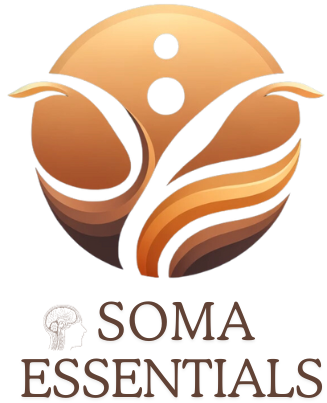How to Track Sensations in the Body and Improve Your Mind-Body Connection
In today’s fast-paced world, we often forget to listen to our bodies and the sensations they are experiencing. However, being in tune with our mind-body connection is crucial for our overall well-being and can greatly improve our quality of life. That’s where somatic experiencing comes in, offering a powerful set of techniques to help us track and understand the sensations in our body. In this article, we will dive into the concept of somatic experiencing and explore how it can help us become more aware of our body’s sensations. We will also discuss how tracking these sensations can lead to a deeper mind-body connection and ultimately, a happier and healthier life. So let’s get started on this journey of self-discovery and learn how to track sensations in the body for a better understanding of ourselves.
In today’s fast-paced world, it’s easy to feel disconnected from our bodies. However, tracking sensations in the body can help us improve our mind-body connection and overall physical and emotional well-being. This article will delve into the world of somatic experiencing, exploring techniques and exercises that can help you become more in tune with your body.
Somatic therapy is a holistic approach to healing that focuses on the mind-body connection. By becoming more aware of our physical sensations, we can gain a deeper understanding of our emotions and inner experiences. This can lead to a greater sense of self-awareness and self-discovery.
One of the key components of somatic therapy is somatic movement. This involves using movements and exercises to release tension, stress, and trauma from the body. By doing so, we can improve our physical well-being and also release emotional blocks that may be hindering our overall health.
To get started with somatic movement, try incorporating simple exercises into your daily routine. This can include stretching, yoga, or even dance. The important thing is to focus on the physical sensations in your body as you move and be mindful of any tension or discomfort you may be feeling.
Another aspect of somatic therapy is somatic healing, which involves using touch, movement, and breathwork to release stored tension and trauma from the body. This can be done through practices such as massage, acupuncture, or somatic experiencing sessions with a trained therapist.
Lastly, somatic psychology is a branch of psychology that focuses on the mind-body connection and how it relates to our thoughts, emotions, and behaviors. By understanding how our physical sensations are connected to our mental and emotional state, we can gain greater insight into ourselves and our experiences.
Overall, tracking sensations in the body through somatic therapy, movement, and psychology can greatly benefit our well-being. By becoming more in tune with our bodies, we can improve our mind-body connection and gain a deeper understanding of ourselves. So take the time to listen to your body, and incorporate somatic practices into your daily routine for a healthier and more fulfilling life.
Understanding Somatic Psychology
Somatic psychology is a branch of psychology that focuses on the mind-body connection and how the body holds and processes emotions and trauma. It is based on the idea that our bodies store memories and experiences, and by tuning into our physical sensations, we can gain a deeper understanding of ourselves.
The principles of somatic psychology revolve around the belief that our bodies have an innate wisdom and intelligence, and by paying attention to our physical sensations, we can tap into this wisdom to promote healing and self-discovery. Through somatic experiencing techniques, we can release stored tension and emotions, and become more aware of our bodies.
What is Somatic Therapy?
Somatic therapy is a form of psychotherapy that focuses on the mind-body connection and the physical sensations experienced in the body. It is based on the belief that our bodies hold onto emotional and psychological traumas, and that by paying attention to our physical sensations, we can heal from these traumas and improve our overall well-being.
Through somatic experiencing techniques, individuals can learn how to track sensations in their body and use them as a tool for healing. By becoming more aware of our body’s signals, we can better understand our emotions and thoughts, leading to a stronger mind-body connection.
Somatic therapy has been found to be effective in treating a variety of mental health issues, including anxiety, depression, PTSD, and chronic pain. It can also help with stress management, improving self-awareness and self-regulation, and enhancing overall physical health.
Somatic Movement and Healing
Somatic movement and healing is a powerful way to connect with our bodies and promote healing. By engaging in specific movements and exercises, we can release tension, trauma, and emotions that are stored in our bodies. This allows for a deeper understanding of our mind-body connection and can lead to increased physical and emotional well-being.
One technique that is commonly used in somatic movement and healing is known as somatic experiencing. This approach involves paying attention to the sensations in our body and using movement to help release them. By tracking these sensations, we can gain insight into our body’s responses to stress and trauma, allowing us to better regulate our emotional and physical reactions.
There are many different somatic experiencing techniques that can be incorporated into our daily lives. One simple exercise is to stand with your feet hip-width apart, close your eyes, and focus on the sensation of your feet on the ground. Slowly shift your weight from side to side, noticing any changes in sensation or emotion that arise. This can help us become more present in our bodies and release any tension or discomfort that we may be holding onto.
Another beneficial technique is to incorporate gentle movements, such as stretching or yoga, into our daily routines. These movements can help us become more aware of our body’s needs and sensations, promoting a deeper mind-body connection. Additionally, engaging in physical activities that bring us joy can also be a form of somatic movement and healing. Whether it’s dancing, hiking, or playing a sport, finding ways to move our bodies in a way that feels good can be incredibly healing.
Incorporating somatic movement and healing into our lives can have numerous benefits for our overall well-being. By connecting with our bodies and releasing stored tension and emotions, we can improve our mind-body connection and promote healing. So take some time to explore different movements and exercises, and see how they can help you become more in tune with your body.
Tracking sensations in the body is a powerful tool for improving our overall well-being. By incorporating somatic therapy, movement, and psychology into our daily lives, we can become more in tune with our bodies and experience a deeper mind-body connection. Remember to listen to your body and give yourself time to practice these techniques regularly for the best results.

